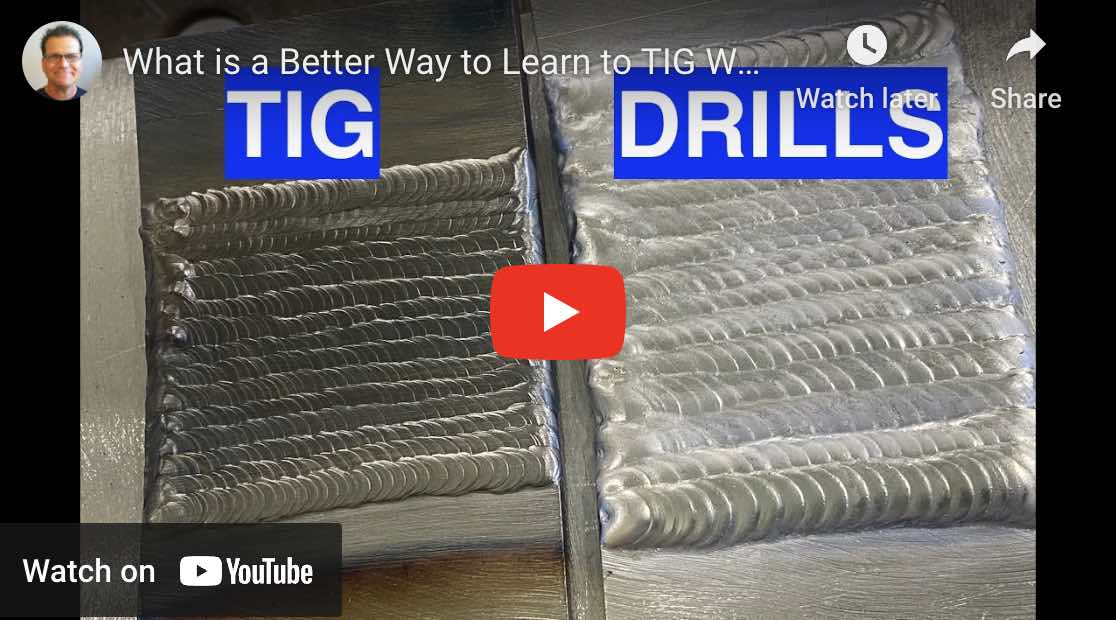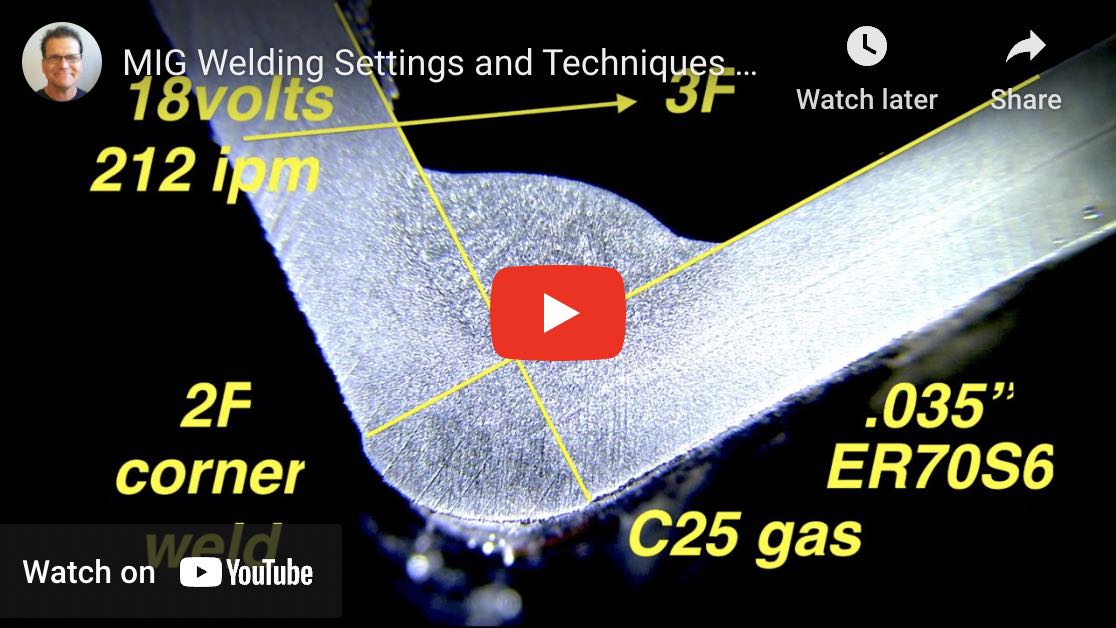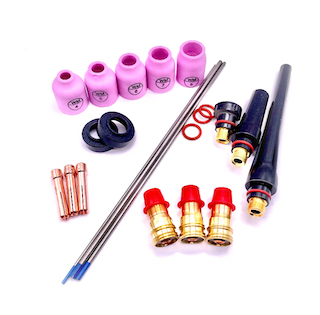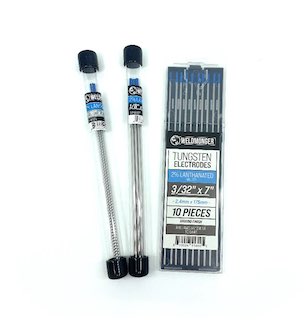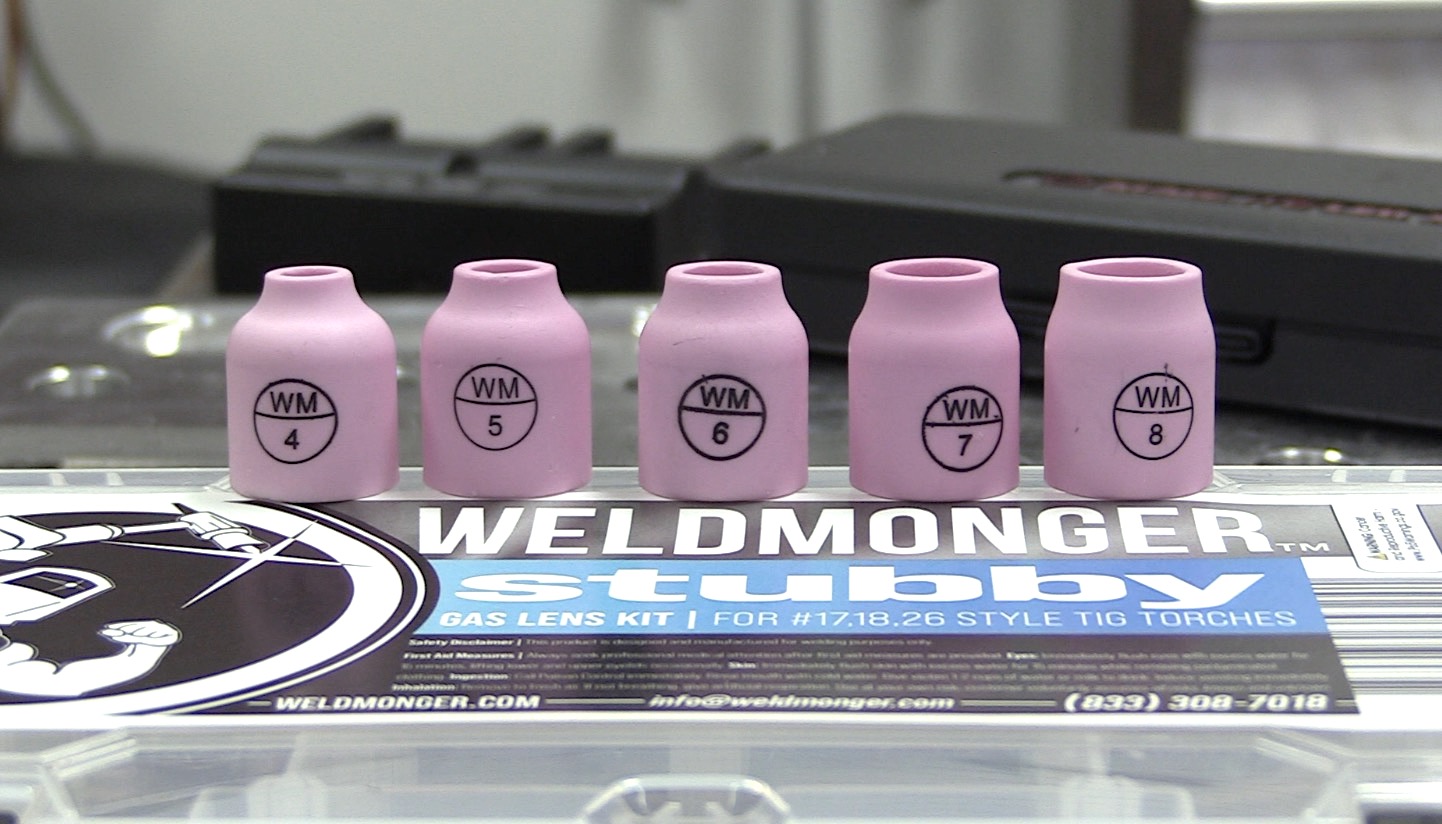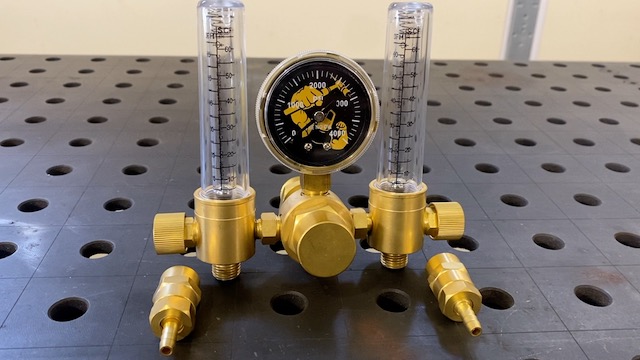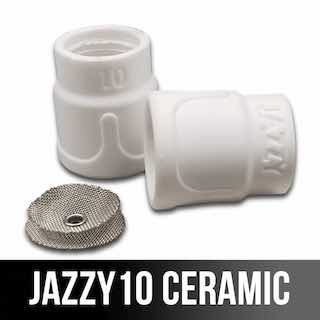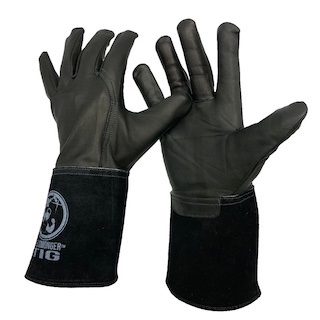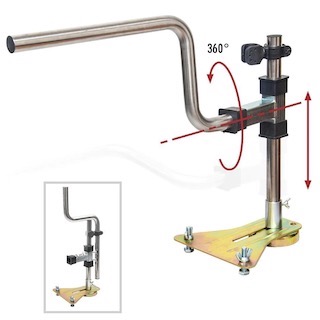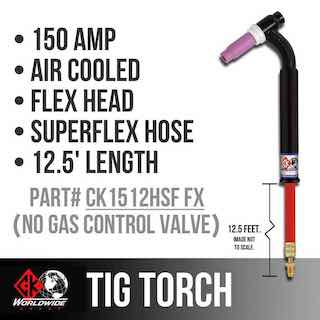MIG vs TIG Welding
See most recent videos here
Getting Better at MIG Welding by Practicing
Get Better at TIG Welding with this Tip
The first part of the mig vs tig welding video above shows mig welding a 1/4" carbon steel lap joint. And since the welding machine I used was not just a mig welder but a MTS (MIG,TIG,STICK) welder that also does lift arc TIG and Stick welding, I also showed some walking the cup technique video clips.
When it comes to MIG vs TIG welding, each process shines in different ways.
MIG is great for fabrication while TIG is more precise and more versatile.
MIG welding really shines on carbon steel can also be used for other metals like stainless steel and aluminum.
TIG welding is more versatile in that switching from one metal to another usually only requires using a different filler rod and tweaking some settings and only takes a few seconds to switch.
With MIG welding, switching from carbon steel to stainless or aluminum requires a different spool of wire along with different shielding gas.
These 2 videos will show you the difference in MIG vs TIG Welding
If you are trying to decide between a MIG welder and a TIG welder, it really boils down to what you will doing
If you need to weld stainless or aluminum, a TIG welder is usually the best choice.
If this is your first welding machine and you just want to be able to fix lawn equipment or make yard art, a mig welder might be the ticket.
MIG welding has a shorter learning curve for most people but as I mentioned earlier, is best for carbon steel.
TIG welding takes a bit longer to learn for most people but is much more versatile and allows you to get into all kinds of things like automotive exhaust components, stainless brewery equipment, marine aluminum parts, and much more.
Advice on Buying a MIG vs TIG Welder
Advice on Buying a MIG vs TIG Welder – Pros and Cons
If I were talking to my nephew who's just getting into welding—maybe working on a car, doing home projects, or thinking about a welding career...I’d break it down like this:
MIG Welding (Metal Inert Gas) or (gas metal arc welding GMAW)
note: strictly speaking about short circuit mig welding
Pros:
- Easy to Learn – Great for beginners. Just pull the trigger and go.
- Faster Welding Speed – Perfect for quick fabrication jobs, especially on mild steel.
- Somewhat Versatile – Can weld steel, stainless, and aluminum (with the right setup).
- Short circuit mig is Great for Materials up to around 3/8" and can also be used for very thin carbon steel like auto body work with lower settings and smaller diameter wire like .023"
- Good for Outdoor Work (with flux-core) – Flux-core wire allows MIG to work in windy conditions without shielding gas.
Cons:
- Not as Precise as TIG – MIG is not ideal for really clean or delicate welds.
- More Spatter – Creates more mess, which means more cleanup.
- Not as versatile as TIg – You’ll need a different gas cylinder and different spool of wire for stainless and usually will need a spool gun for aluminum.
- Harder to Use on Thin Sheet Without Burning Through – Takes practice to avoid blowouts.
TIG Welding (Tungsten Inert Gas)
Pros:
- Clean, Precise Welds – Ideal for projects that need a nice finish, like automotive panels or stainless steel.
- No Spatter – Leaves a smooth, clean weld with little to no cleanup.
- Perfect for Thin Materials – You can dial in low amps and get detailed without burning holes.
- Can Weld Almost Any Metal – Great for aluminum, stainless, copper, bronze, magnesium, etc.
Cons:
- Harder to Learn – You’ve got to use both hands (torch and filler rod), plus a foot pedal. Definitely a skill welder’s process.
- Slower Welding Speed – Not ideal if you want to weld large projects quickly.
- Expensive Equipment – TIG welders generally cost more and require more accessories (cups, gas lenses, argon gas, tungsten, foot pedals).
- Not Great Outdoors – Wind can mess with the shielding gas easily.
Which One Should You Choose?
If you’re just getting started and want to weld up a go-kart frame, do car repairs, fix things around the house, or build projects out of mild steel, MIG is probably the better starter welder. It's easier, faster, and more forgiving for beginners.
But if you’re aiming for high-quality, and visually appealing welds (like motorcycle tanks, stainless exhausts, or aluminum projects), or planning a career in aerospace, motorsports, or high-end fabrication, then investing in TIG is worth it—just be ready for a steeper learning curve.
Good news, we have hundreds of videos here at weldingtipsandtricks.com and at my blog at weldmonger.com that will help you learn MIG and TIG welding.


